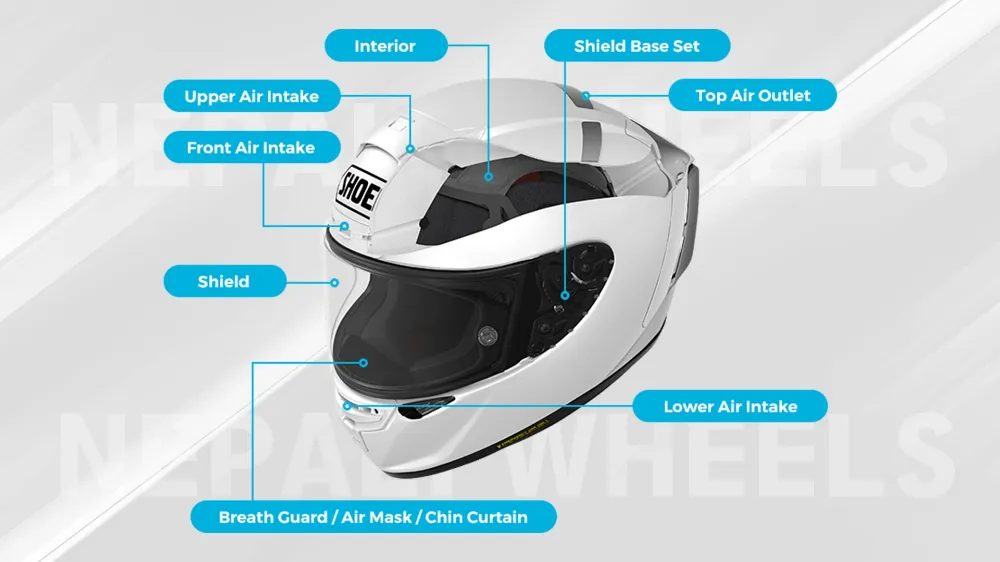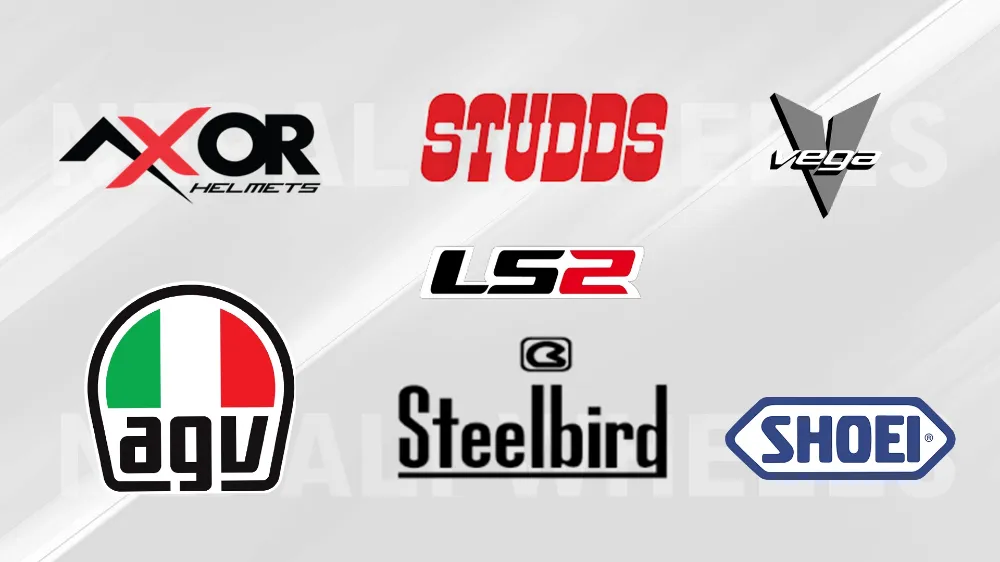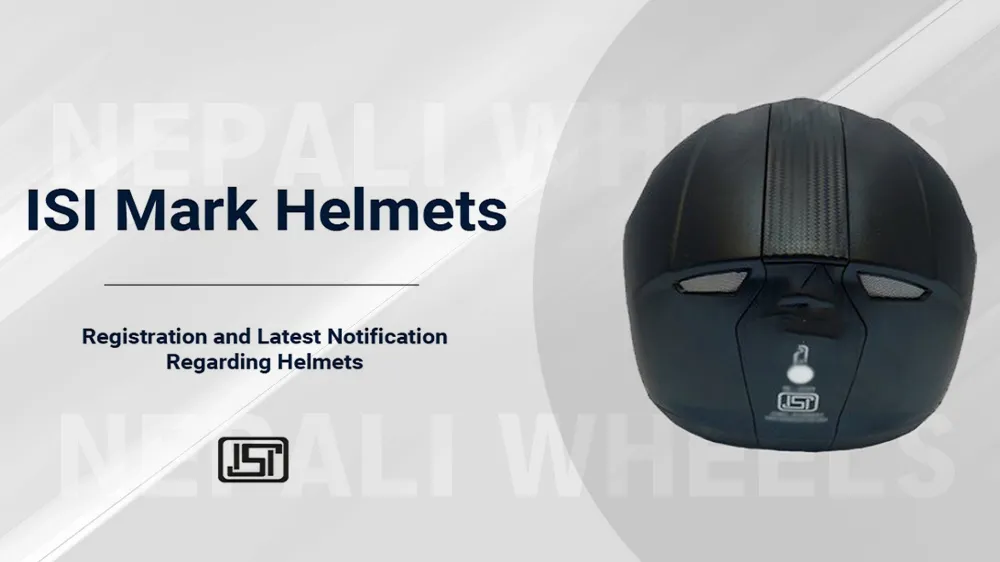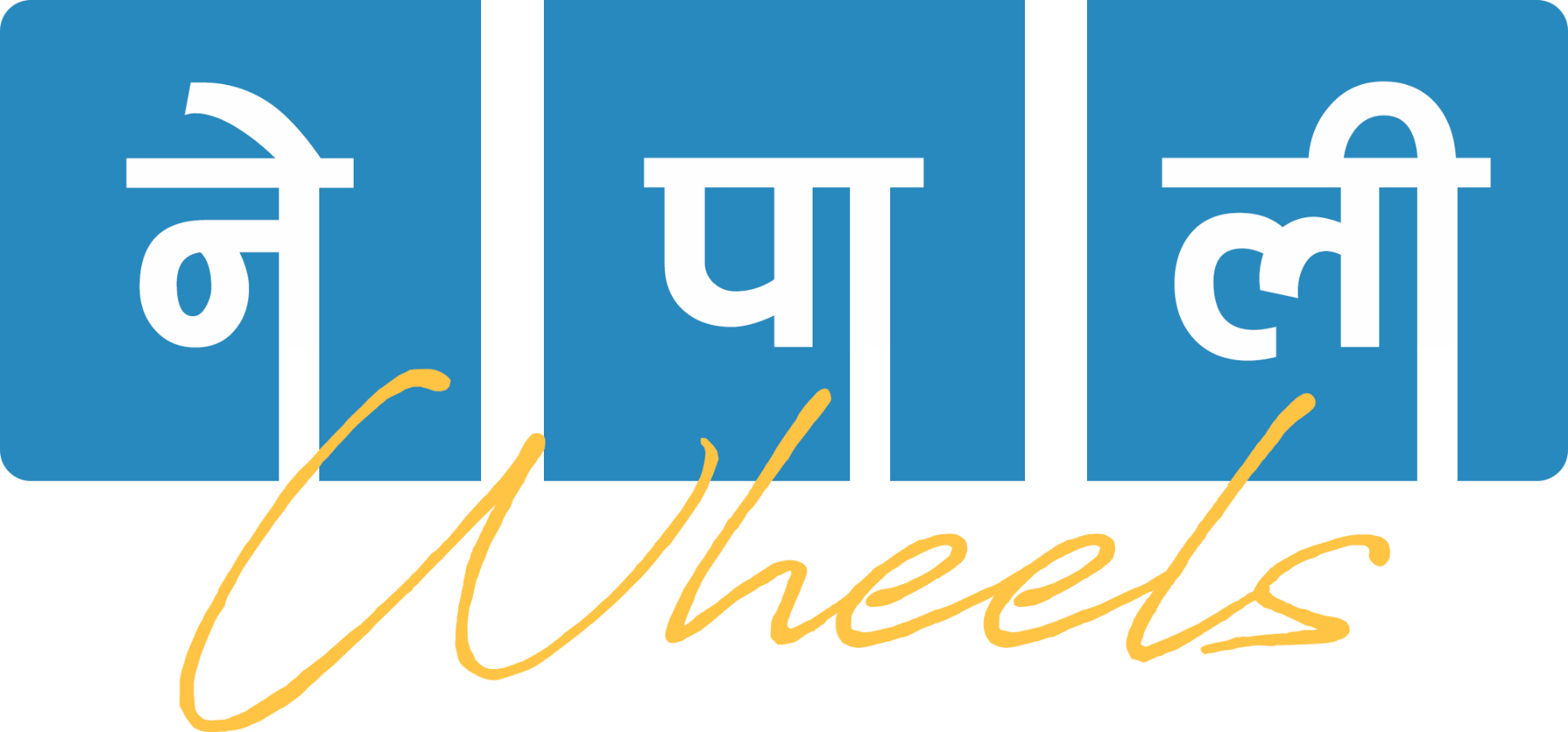Helmets come in all shapes and sizes. Some remind you of dirt tracks, and some remind you of cruisers. Regardless of their shapes and protrusions, the purpose of the helmet is to keep the driver safe in the event of an accident—however, some shapes are better than others at doing so.
In Nepal, you can find almost every type of helmet; full face, three fourths, half helmets, and off-road; from a number of reputable brands—you can find the Race-R Pro GP from Shark, the K1 from AGV, and the N-802S from Nikko right on Nepali Wheels’ YouTube.
Different helmets perform better at keeping you safe depending on their types, safety ratings, and their fit. Getting the helmet can be a fatal mistake.

Buying a helmet might be an overwhelming task with how much you have to consider to actually find the right helmet for you. But we’re here to make the process simple for you.
10 things to remember when buying a helmet.
To simplify the process of buying a helmet, make a checklist of 10 things to look for in a helmet before you buy it. Step by step, as you read this, check the helmet you’re buying (or already own) to see if it meets the requirements.
Make sure you consider these points carefully to ensure that you’re as safe as can be on the road.
Buying From Authorized Dealers
Before you walk into any shops or open websites to start looking at helmets, you need to make sure that the shop you’re buying from is the real deal. Look for reviews and feedback of the shop you’re buying it from on the internet and check if there are any wary reviews.
You can look at websites like Helmets Nepal and Moto World Nepal, as they’re both reputable brands in Nepal, specifically for motorcycling gear.

Knowing that the product you’re paying a premium for to ensure your safety is exactly what you expect it to be, and is exactly as advertised, is a very important part of the process.
Buying a fake copy of a helmet not only gets you scammed but also puts your life at risk.
The Safety Standard
One of the most important things to consider while buying a helmet is the safety standards it is approved for.
When buying a helmet, you should look at the back for certifications from the following institutions:
- Department Of Transport (DOT)
- Economic Commission of Europe (ECE)
- SNELL (Snell Memorial Foundation)
- ISI Marked Helmets

These certifications ensure that the helmet you are buying is tried and tested to meet the safety regulations across the American and European safety standards. You can read in detail about these certifications on Helmets Nepal’s blog, here.
However, some manufacturers might fake their certifications, so always make sure to check if the helmet you are buying is actually certified.
You can find and filter through certified helmets from brands like Shark, AVG, Studds, SMK, and LS2, among others in Nepal on sites like Helmets Nepal and Moto World Nepal.
The Fit Of The Helmet
Imagine you’re wearing really baggy pants; if you aren’t careful, you’re very likely to trip, especially if you’re running in them. It’s the same thing with helmets—a loose helmet will move around too much and make driving riskier than it already is.
You wouldn’t want to embarrass yourself on your expensive sport bike with a helmet too big for your head would you?
If a helmet is too loose, it can obstruct your vision when driving and distract you by moving too much. On the contrary, a helmet that is too tight will not give your head enough breathing space and squish it.
How to find the right fitting helmet for yourself ?
A helmet that fits well will feel snug but not tight like it’s pushing in on your head. It should also not change its position on your head when you’re moving around; if you suddenly stop your head, the helmet should stop with you.
Try on multiple helmets until you find one that fits you well. If there’s a specific helmet you’d like, ask if the seller has different sizes for you to try. If the helmet doesn’t fit well, do not buy it. You will not grow into your helmet.
The Comfort Of The Helmet
Consider three things when judging the comfort of a helmet:
- The fabric on the inside
- The weight of the helmet
A softer fabric on the inside will obviously feel more comfortable. But you also have to consider the thickness of the pads under the fabric.
The weight of the helmet also makes a big difference in comfort. The acceptable range for regular use helmets is between 1500 to 1800 grams.
The Type Of Helmet
Helmets come in a few different types: The most common ones you’ll find on Nepali streets are:
- Full Face
- Half
- Open Face
- Off-road
Each helmet has its own purposes and reputation in the two wheeler community. You’ll typically see half helmets on a Royal Enfield or a Jawa rider; full face on younger demographic of riders on their performance bikes, and open face on most scooters and commuters.
While each helmet has its own signature look that you might want, the safest helmet is always the full face / off-road.
Half and open face helmets might protect the top and some of the side of your head, but anything from ears below is at risk if an accident occurs.
If safety comes first and aesthetic second, always get a full face helmet.
The Chin Strap
Across the different types of helmets, you’ll find different types of chin straps. The two most common ones are:
- Quick release buckle
- Ratcheted quick release
Ratcheted chin straps are easier to use out of the two and even allow for minute adjustments in the tightness of the strap—they’re also most common on full face helmets. Buckles operate much the same but are slightly harder to use.
We’d recommend you get a ratchet strap as well so you don’t have to spend any more time than you need to take off the helmet.
The Ventilation Of The Helmet
A good helmet also has good ventilation to keep the inside of the helmet from turning into a sauna and fogging up your visor every time you take a breath.
A helmet without good ventilation will not only be uncomfortable on longer rides, but also risk covering your vision when driving. Always get a well ventilated helmet.
Some helmets will have faux-vents on the outside to scam buyers. Make sure you verify that the vents on your helmet works.
The Visors Of The Helmet
Other than on the half helmet, every helmet you can find on the market will have a visor. Some helmets will even have two.
A good visor should shield your face well from air and anything else. You should not feel wind on your face with the visor on. You should also make sure that the visor is made of a strong material that doesn’t scratch or break easy.
Some visors will also come with a slidable sun visor. The sun visor is a tinted visor that sits behind the clear visor, and can be manually slid on wherever needed. Sun visors, and tinted visors instead of clear ones are becoming more popular.
The Price
A good quality helmet can be expensive, but remember that you’re only investing in your own safety. Opting for a cheaper helmet to save a couple hundred or thousands can cost you a lot more in the future.
Look for helmets that are within your budget, but still meet safety standards and provide the features you need.
The Brand And Reviews
Look for reputable brands that have a good reputation for safety and quality. Once you’re narrowed down a few choices, read reviews and feedback on different sites and talk to other riders who’ve bought the ones you’re looking for.
[image]
If you’re looking for video reviews, Nepali Wheels has video reviews on Shark and AGV helmets on YouTube; you can watch the videos to get a quick understanding of their basic features and price.
When you should replace the helmet.
A helmet's lifespan is considered to end between 4 to 5 years of its initial purchase. According to industry practitioners, if you use a helmet regularly, you should replace it after 4 years of use.
Plus, over the years, dust, germs, and who knows what else can create an unhygienic film over the breathing points of the rider that cannot be washed away. To keep yourself safe and clean, you should replace your helmet as advised.
FAQs
- How do I choose the right helmet?
Make sure it fits snug, isn’t too heavy, has proper ventilation, and covers as much of your face as possible.
- Which helmet brand is best in Nepal?
The best helmet brand in Nepal is Bell.
- What are the best helmets under 5000 in Nepal?
The best helmets under 5000 in Nepal are Studds Shifter D4, Vega Bolt Solid, and SteelBird Air SBA 1.
- How to check the safety feature in a helmet?
Look for safety certifications like DOT, ECE, Snell, and a SHARK rating of 4.


























